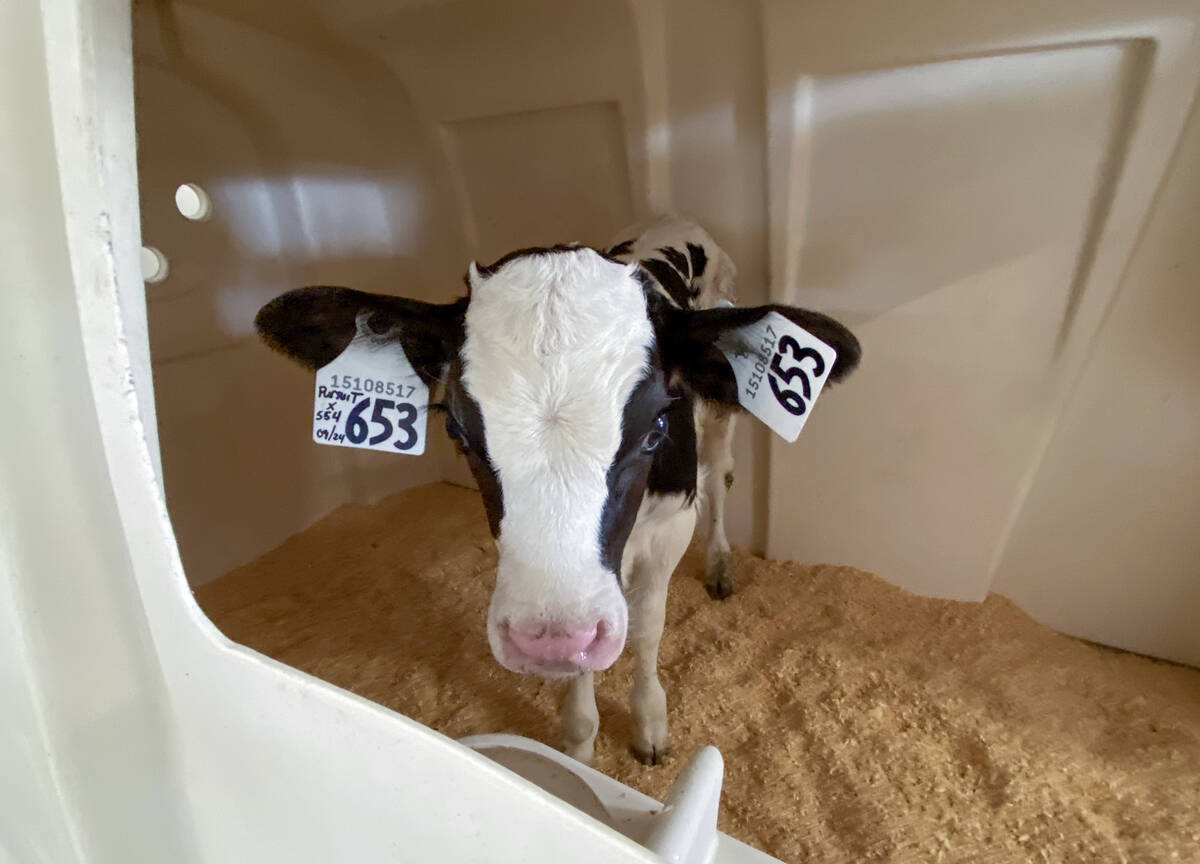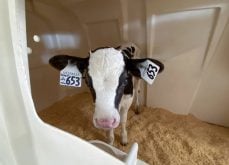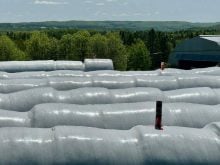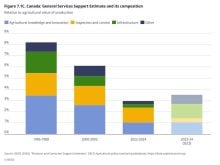The profitability of dairy-beef calves is limited by the lack of knowledge on how best to raise them, according to one researcher.
More peer-reviewed research is needed to optimize the early life nutrition and management of these calves, said Michael Steele, professor of animal biosciences at the University of Guelph.
Why it matters: The increase in dairy cows being bred to beef has evolved quickly and researchers are working to fill the gaps in knowledge about how to manage dairy-beef cross calves.
Read Also

Lactanet turns methane expertise into business opportunity
Lactanet’s new fee-for-service breeding tool initiative to reduce greenhouse gas emissions in Canadian and Swiss Holstein herds will launch in April 2026.
Steele highlighted how little is known about the growth and developmental needs specific to dairy-beef animals at the Western Canadian Dairy Seminar in Red Deer, Alta., earlier this spring.
“The biggest question is how do we actually raise these animals, and what kind of stressors and challenges are unique for the crossbred calves coming from dairy origin?” Steele said later in an interview with Farmtario.
In addition to these unknowns, dairy-beef calves often face management concerns specific to this production system.
Nutrition at the farm of origin can be an issue in calves given lower-quality colostrum and inadequate milk compared to replacement heifers. As well, their immune systems are challenged by being transported to rearing facilities at such a young age, which increases the likelihood of disease.
The limited data that does exist on dairy-beef calves, said Steele, is based on research at the feedlot stage and doesn’t encompass the calves’ first months.
“We have no idea what happened to them before. We don’t even know their age,” he said.
To get the full picture, Steele and his colleagues are conducting a series of studies that capture the entire lifespan of dairy-beef calves. One study has been completed, two are in progress and a fourth will begin in 2026.
“It does take a long time to conduct these studies from birth all the way to slaughter, and I think that’s the main reason why you don’t see it in the literature is because it’s not possible in most research facilities,” he said.
“But we’re set up at the University of Guelph. We have the facilities where we can do that, which is very unique, and we have dedicated students that are really taking this on.”
The goal of this work is to evaluate the long-term response of different early life nutrition and management strategies on growth, performance, carcass quality, animal welfare and sustainability.
What they’ve learned so far about early life nutrition can already be applied by producers, starting with enhanced nutrition similar to that for replacement females.
“Feeding more colostrum, even up to 15 per cent of their birth body weight in the first 12 to 24 hours, is really critical,” Steele advised.
Another area to be explored is how best to feed dairy-beef calves in the stage between weaning at around two months of age and feedlot entry at about eight months. Based on what the researchers have learned so far about this phase, feeding higher-energy diets is key to optimal nutrition.
“We’re making up for the milk that they’re not receiving since they’re weaned early,” said Steele.
These recommendations are just the beginning, and Steele anticipates more practical and scientifically informed knowledge specific to the management of dairy-beef calves coming in the next few years.
“I think in the end we’ll have recommendations more suited to that dairy-beef animal and have the long-term consequence of that recommendation,” he said.
He also predicts producers will receive greater value for these calves if specific strategies are proven to enhance quality in terms of beef production.
“But in order to do that and calculate that, you do need these studies to at least approximate what the value proposition is.”















